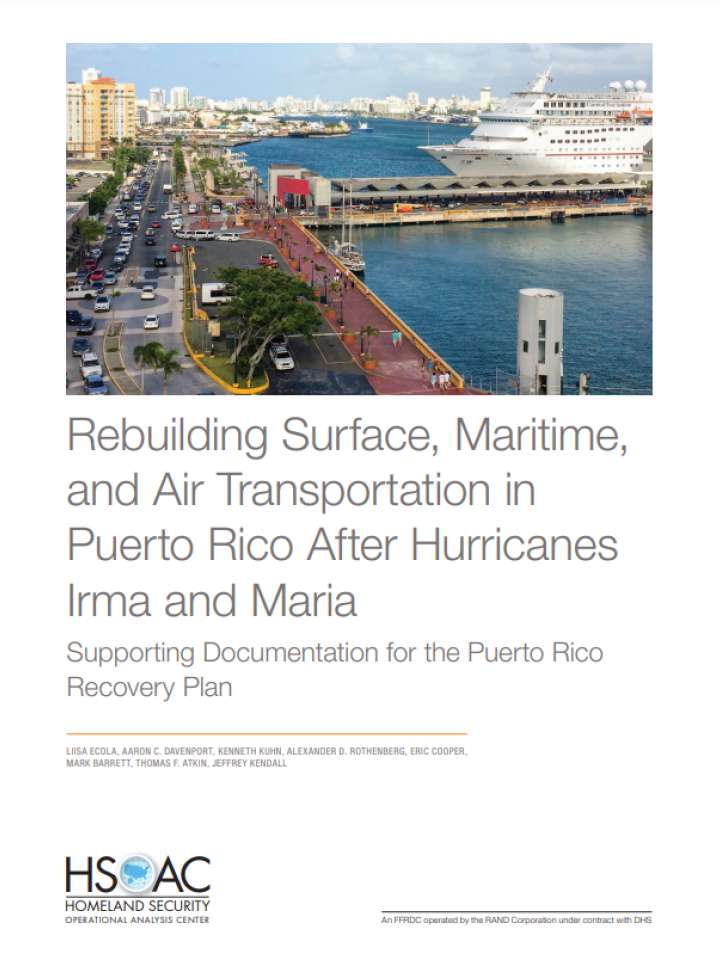Rebuilding surface, maritime, and air transportation in Puerto Rico after hurricanes Irma and Maria: supporting documentation for the Puerto Rico recovery plan
This report provides a comprehensive evaluation of the transportation sector before and after Hurricanes Irma and Maria devastated Puerto Rico in September 2017. It includes a detailed description of prestorm conditions across surface, maritime, and air transportation; descriptions of the damage caused by the hurricanes, including physical damage and estimated costs to repair them; and a list of proposed courses of action selected by the government of Puerto Rico.
Key Findings
The authors find that Puerto Rico's transportation sector was suboptimal even before the hurricanes, suffering from a lack of resilience and numerous other problems.
- Before the storms, transportation was marked by roads and bridges in only fair condition, a public transportation system with low service provision and declining ridership, a high reliance on one seaport and one airport, declining cargo movements, and significant fiscal solvency concerns.
- Puerto Rico is very dependent on shipping for food and fuel, and cargo shipping is highly centralized at the Port of San Juan; planning efforts do not fully address the possible effects of the loss of shipments via San Juan in the event of a major storm or other disruption.
- There is an apparent lack of coordination among multiple operators in the various transit systems; the sheer number of owners, operators, and other stakeholders may complicate recovery and resilience efforts.
- The lack of an existing asset management system means that standardized information may not be available.
- Overall, the transportation infrastructure must be designed to be more resilient to future storms.
- The hurricanes produced widespread damage to the transportation sector, totaling an estimated $1.8 billion in repair costs and another $1.1 billion in recommended resilience upgrades. Although almost all facilities had reopened for service by spring 2018, many still require additional permanent work to bring them to a state of good repair.
Recommendations
Transformation and Innovation in the Wake of Devastation: An Economic and Disaster Recovery Plan for Puerto Rico provides 22 proposed courses of action for transportation:
- Refine and enforce design standards for roads and bridges.
- Harden vulnerable transportation infrastructure.
- Redevelop Rafael Hernández International Airport.
- Repair damage to all airports.
- Create a road maintenance and repair program.
- Update Airport Emergency Plans.
- Incentivize a variety of mobility options.
- Improve bus service.
- Develop an intelligent transportation system.
- Develop redundant seaport capacity.
- Support infrastructure asset management.
- Repair damage to ports and ferry terminals.
- Reassess the Marine Transportation System Recovery Plan.
- Enact long-term planning to develop the Port of Ponce as a regional transshipment hub.
- Consolidate port ownership.
- Repair damage to the surface transportation network.
- Provide high-capacity transit service to Luis Muñoz Marín International Airport.
- Provide high-capacity transit service between Caguas and San Juan.
- Extend highways PR-5 and PR-22, and complete highway PR-10 (three separate courses of action).
- Increase port facility resilience.
Explore further
